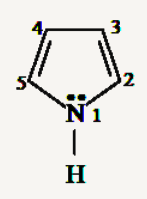The common oxidation states of Ti are
(a)+2,+3
(b)+3,+4
(c)3,−4
(d)+2,+3,+4
+2,+3
+3,+4
3,−4
+2,+3,+4
The correct Answer is:B
To determine the common oxidation states of titanium (Ti), we will analyze its electronic configuration and the stability of its oxidation states.
1. Identify the Atomic Number and Electronic Configuration:
- Titanium has an atomic number of 22.
- Its electronic configuration is:
Ti: (Ar)3d24s2
2. Determine Possible Oxidation States:
- Titanium can lose electrons from both the 4s and 3d orbitals.
- The common oxidation states arise from the loss of these electrons.
3. Common Oxidation States:
- +4 Oxidation State:
- When titanium loses all four electrons (2 from 4s and 2 from 3d), it achieves the configuration of the noble gas Argon:
Ti4+:(Ar)3d04s0
- +3 Oxidation State:
- When titanium loses three electrons (2 from 4s and 1 from 3d), it has the configuration:
Ti3+:(Ar)3d1
- +2 Oxidation State:
- When titanium loses two electrons (2 from 4s), it results in:
Ti2+:(Ar)3d2
- This state is less stable due to the presence of unpaired electrons in the 3d subshell.
4. Conclusion:
- The most stable oxidation states of titanium are +3 and +4, while +2 is also possible but less common.
- Therefore, the common oxidation states of titanium are:
Answer: (d) +2, +3, +4
- Titanium has an atomic number of 22.
- Its electronic configuration is:
Ti: (Ar)3d24s2
- Titanium can lose electrons from both the 4s and 3d orbitals.
- The common oxidation states arise from the loss of these electrons.
- +4 Oxidation State:
- When titanium loses all four electrons (2 from 4s and 2 from 3d), it achieves the configuration of the noble gas Argon:
Ti4+:(Ar)3d04s0
- +3 Oxidation State:
- When titanium loses three electrons (2 from 4s and 1 from 3d), it has the configuration:
Ti3+:(Ar)3d1
- +2 Oxidation State:
- When titanium loses two electrons (2 from 4s), it results in:
Ti2+:(Ar)3d2
- This state is less stable due to the presence of unpaired electrons in the 3d subshell.
- The most stable oxidation states of titanium are +3 and +4, while +2 is also possible but less common.
- Therefore, the common oxidation states of titanium are:
Answer: (d) +2, +3, +4
Similar Questions
If A=[1234], adjA=[4a−3b], then the values of a and b are:
(a) a=-2, b=1
(b) a=2, b= 4
(c) a=2, b=-1
(d) a=1, b=-2View SolutionThe correct statement about iron includes
(I) the oxidation state of iorn is +6 in K2FeO4
(II) that the iron shows +2 oxidation state with 6 electron in the 3d orbitals
(III) the common oxidation state of iron is +3 with five unpaired electron in the 3d orbitalView Solution
Knowledge Check
- Question 1 - Select One
The oxidation state of Cr in [Cr(NH3)4Cl2]+ is
A0B+1C+2D+3
the coordinates of the foot of the perpendicular drawn from the point (2,-3,4) on the y-axis is
(a) (2,3,4)
(b) (-2,-3,-4)
(c) (0,-3,0)
(d) (2,0,4)View SolutionIf a=2b, then a:b=
(a) 2:1
(b) 1:2
(c) 3:4
(d) 4:3View SolutionThe Value of 22+2222
(a) 54
(b) 3
(c) 34
(d) 5
View Solution413−213=
(a)213 (b) 2 (c)313 (d) 12View SolutionIn pyrrole

the electron density is maximum on
(a)2 and 3
(b)3 and 4
(c)2 and 4
(d)2 and 5View SolutionThe radii of two circles are in the ratio 2: 3. The ratio of their areas is
(a) 2:3
(b) 4:9
(c) 3:2
(d) 9:4View SolutionHow many amino acids (A) and peptide bonds (B) are present in a tetrapeptide?
(a) 4 - 4
(b) 3 - 4
(c) 4 - 3
(d) 3 - 3View Solution

